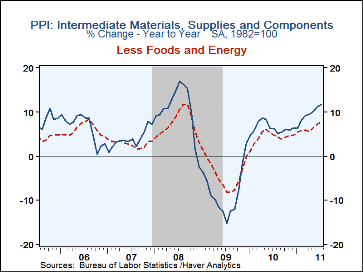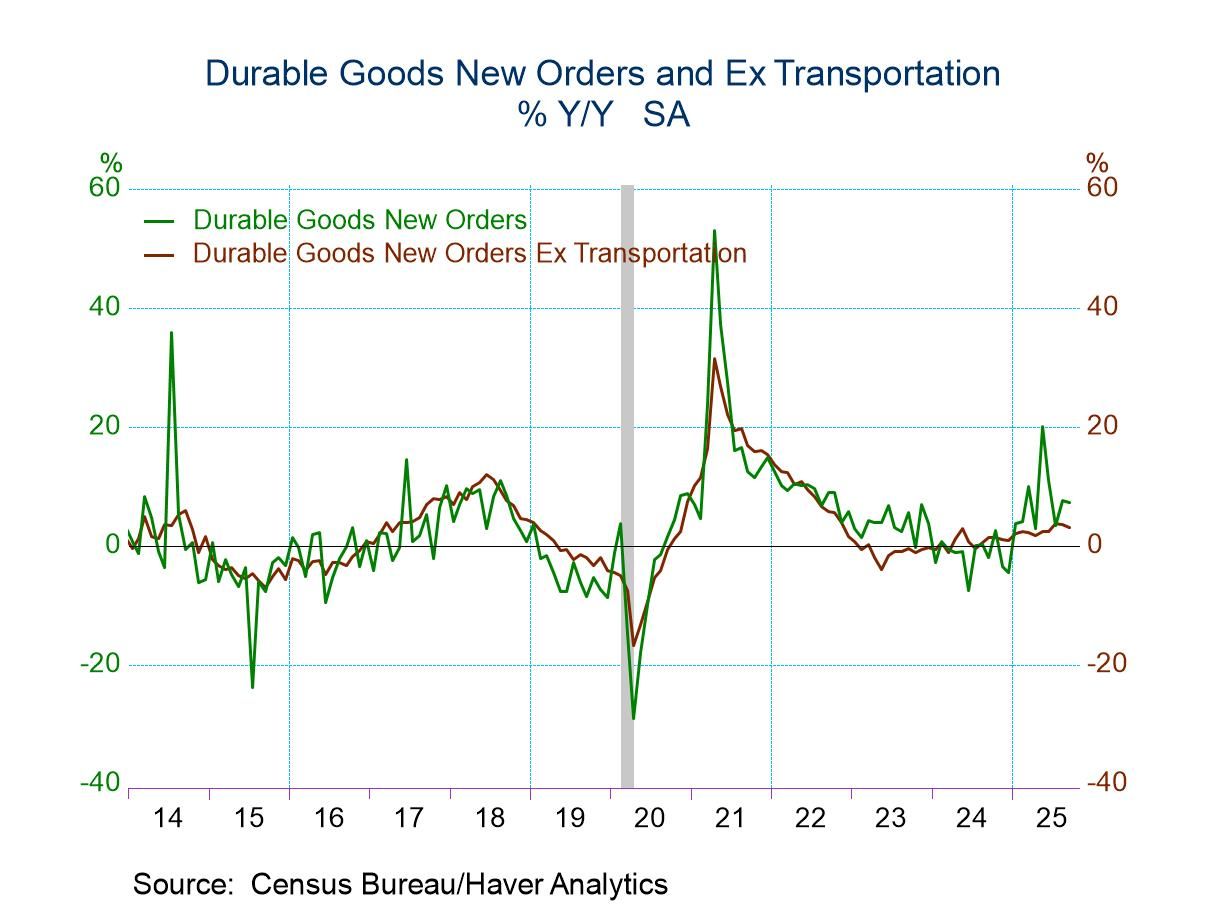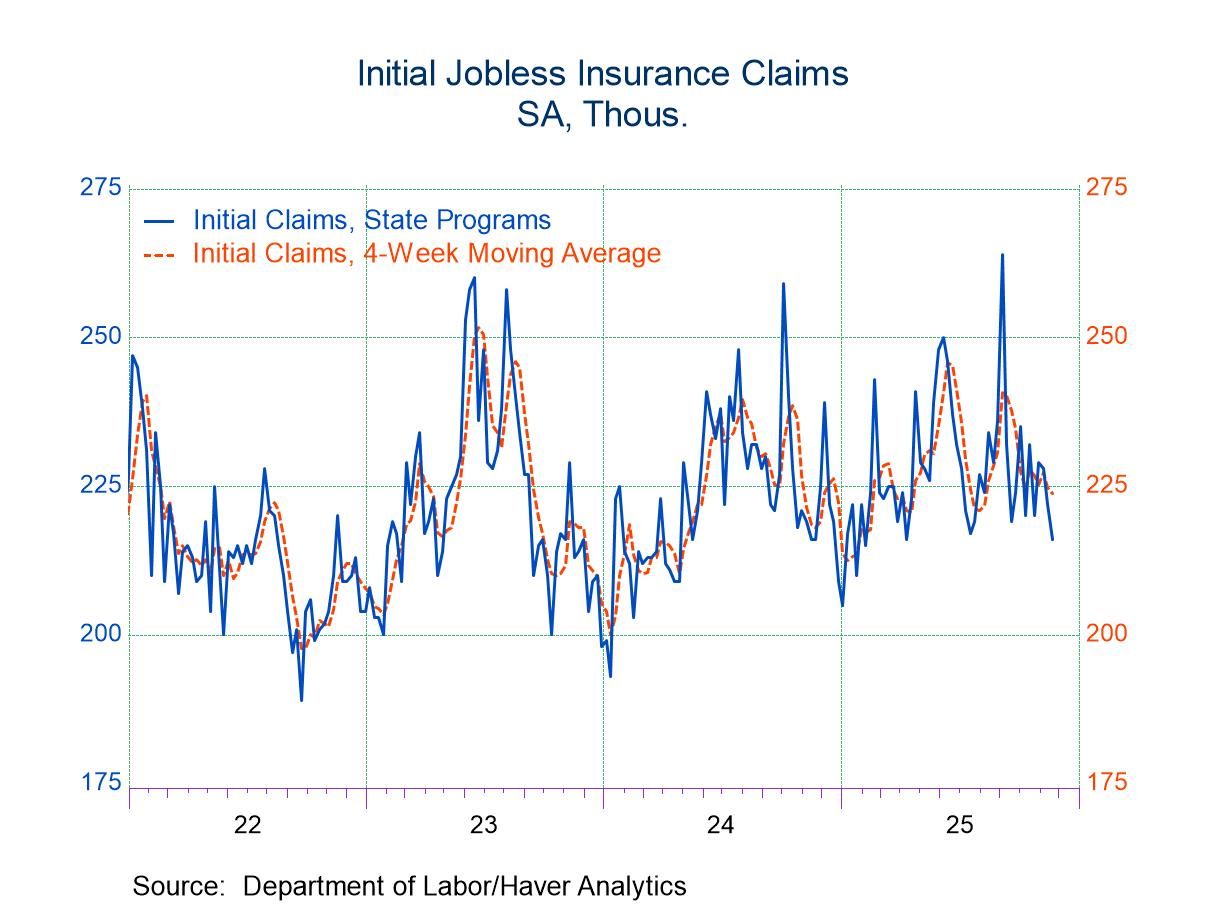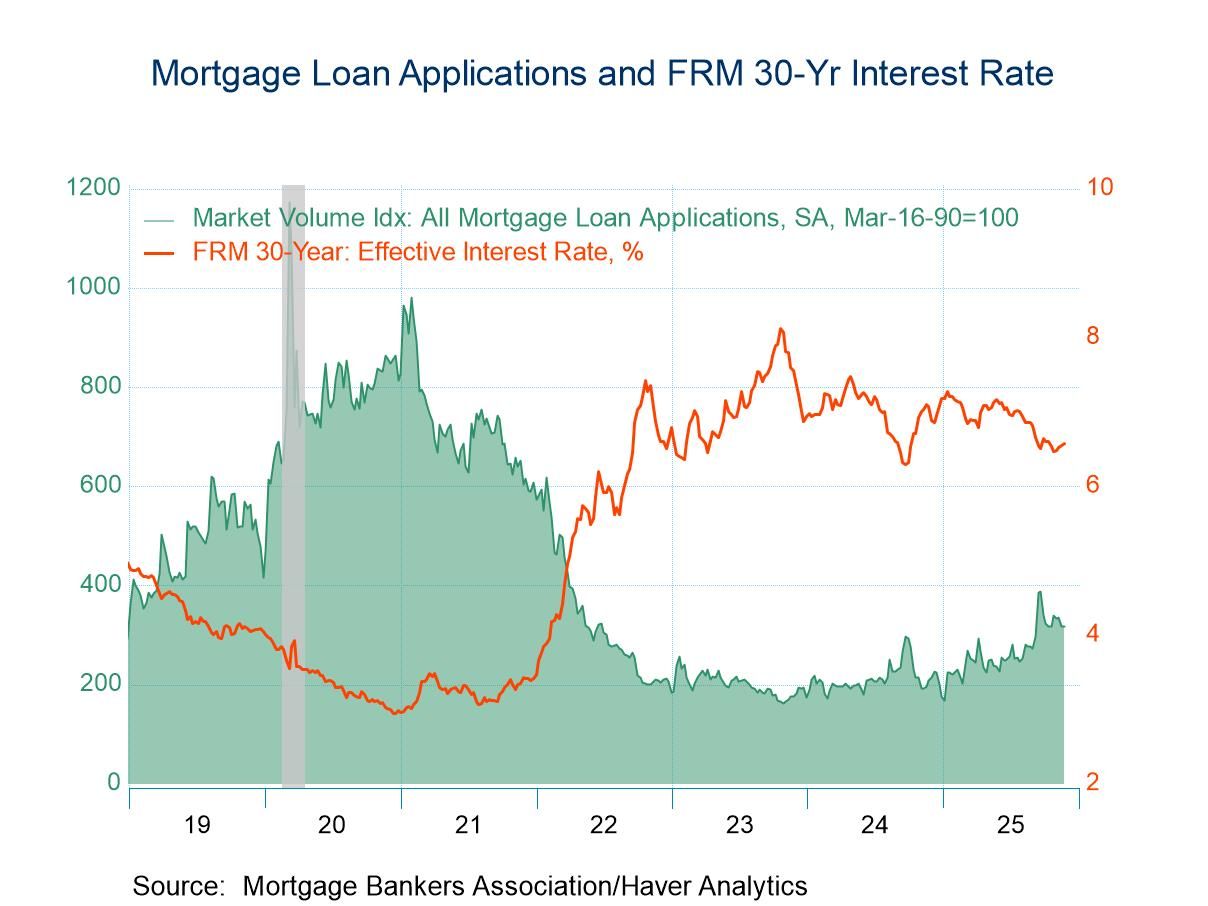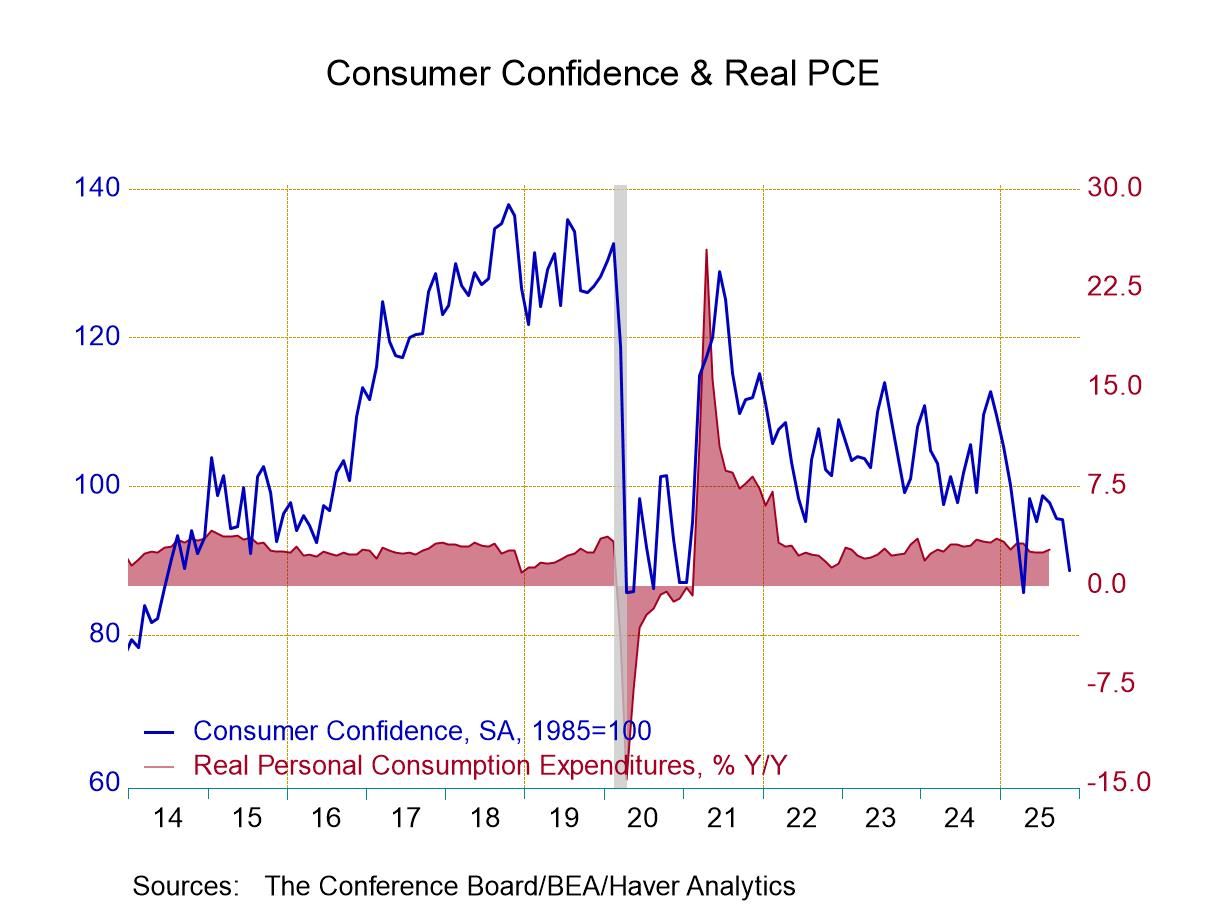 Global| Aug 17 2011
Global| Aug 17 2011U.S. Producer Prices Rise; Core Prices Strengthen
by:Tom Moeller
|in:Economy in Brief
Summary
The U.S. producer price index for finished goods increased 0.2% last month after a 0.4% June decline. The figure compared to Consensus expectations for no change. The change in energy and food prices offset one another. However, [...]
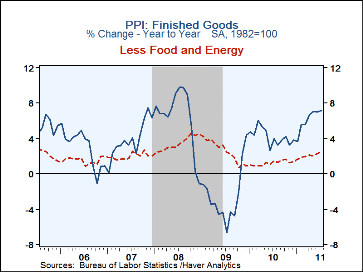 The U.S. producer price index for finished goods increased 0.2%
last month after a 0.4% June decline. The figure compared to Consensus
expectations for no change. The change in energy and food prices offset
one another. However, excluding these two components, there was evidence
of price strength. The 0.4% increase in the core PPI was the strongest
monthly increase since January and was twice expectations. Moreover, the
2.5% twelve-month increase was double last year's rise.
The U.S. producer price index for finished goods increased 0.2%
last month after a 0.4% June decline. The figure compared to Consensus
expectations for no change. The change in energy and food prices offset
one another. However, excluding these two components, there was evidence
of price strength. The 0.4% increase in the core PPI was the strongest
monthly increase since January and was twice expectations. Moreover, the
2.5% twelve-month increase was double last year's rise.
Finished consumer goods prices ticked up 0.1% (9.0% y/y) with the rise held back by lower energy prices. Conversely, food prices rose a strong 0.6% (7.1% y/y). Outside of energy & food, pricing power strengthened with a 0.4% m/m rise (2.5% y/y). Within the components, women apparel prices rose 1.3% y/y after last year's 0.5% y/y decline and men's apparel costs jumped 3.7% y/y after a 0.3% annual uptick. Textile furnishings prices jumped 7.8% y/y, adding to last year's 2.0% increase, but household furnishings prices rose 1.7%, up from 0.3%. Passenger car prices reversed last year's 1.4% decline and tobacco prices rose by a stable and strong 6.2% y/y. Capital goods prices rose 0.4% and by 1.8% y/y after a 0.4% gain in 2010.
The energy price decline reflected a 2.8% (+41.7% y/y) drop in gasoline and a 1.5% decline (+45.8% y/y) in home heating oil. Electric power costs rose 1.2% (1.4% y/y). Food prices again rose a strong 0.6% (7.1% y/y) led by the 19.4% rise in prices for eggs and the 14.1% rise in beef. Dairy prices also posted a firm 17.5% y/y gain though vegetable prices declined 6.4%.
Intermediate goods prices rose 0.2% as energy prices increased 0.4% (+24.6% y/y) and food prices ticked up 0.1% (14.7% y/y). Core-intermediate prices rose a lessened 0.2% (7.8% y/y). Crude materials prices fell another 1.2% as energy prices dropped 2.6% (+14.1% y/y) and food prices slipped 0.8% (+27.3% y/y). However, prices less food & energy were strong again, up 0.7%. Strength in aluminum as well as iron & steel scrap prices continued with a one-quarter y/y rise and copper prices rose by one-third.
The PPI data are contained in Haver's USECON database with further detail in PPI and PPIR. The expectation figure is available in the AS1REPNA database.
| Producer Price Index (%) | Jul | Jun | May | Jul Y/Y | 2010 | 2009 | 2008 |
|---|---|---|---|---|---|---|---|
| Finished Goods | 0.2 | -0.4 | 0.2 | 7.2 | 4.2 | -2.5 | 6.4 |
| Energy | -0.6 | -2.8 | 1.5 | 20.4 | 13.8 | -17.7 | 14.1 |
| Food | 0.6 | 0.6 | -1.4 | 7.1 | 3.9 | -1.4 | 6.8 |
| Less Food & Energy | 0.4 | 0.3 | 0.2 | 2.5 | 1.2 | 2.5 | 3.4 |
| Intermediate Goods | 0.2 | 0.0 | 0.9 | 11.8 | 6.4 | -8.4 | 10.3 |
| Less Food & Energy | 0.2 | 0.3 | 0.9 | 7.8 | 4.3 | -4.2 | 7.4 |
| Crude Materials | -1.2 | -0.6 | -4.1 | 22.2 | 21.4 | -30.3 | 21.5 |
| Less Food & Energy | 0.7 | 1.1 | -0.9 | 27.0 | 32.6 | -23.4 | 14.7 |
Tom Moeller
AuthorMore in Author Profile »Prior to joining Haver Analytics in 2000, Mr. Moeller worked as the Economist at Chancellor Capital Management from 1985 to 1999. There, he developed comprehensive economic forecasts and interpreted economic data for equity and fixed income portfolio managers. Also at Chancellor, Mr. Moeller worked as an equity analyst and was responsible for researching and rating companies in the economically sensitive automobile and housing industries for investment in Chancellor’s equity portfolio. Prior to joining Chancellor, Mr. Moeller was an Economist at Citibank from 1979 to 1984. He also analyzed pricing behavior in the metals industry for the Council on Wage and Price Stability in Washington, D.C. In 1999, Mr. Moeller received the award for most accurate forecast from the Forecasters' Club of New York. From 1990 to 1992 he was President of the New York Association for Business Economists. Mr. Moeller earned an M.B.A. in Finance from Fordham University, where he graduated in 1987. He holds a Bachelor of Arts in Economics from George Washington University.


